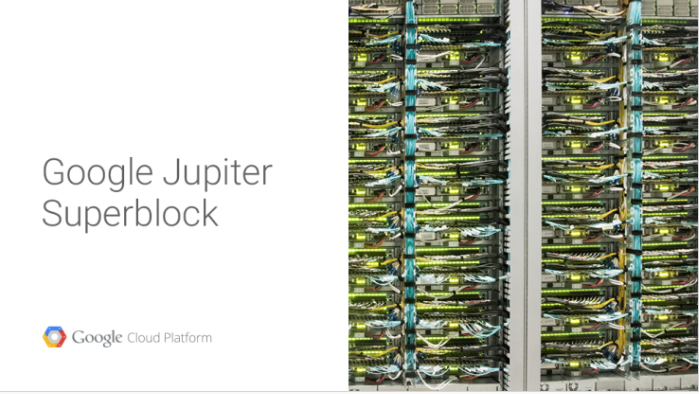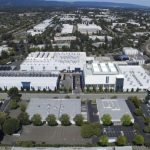Google Pulls Back Curtain On Its Data Center Networking Setup

While companies like Facebook have been relatively open about their data center networking infrastructure, Google has generally kept pretty quiet about how it connects the thousands of servers inside its data centers to each other (with a few exceptions). Today, however, the company revealed a bit more about the technology that lets its servers talk to each other.
It’s no secret that Google often builds its own custom hardware for its data centers, but what’s probably less known is that Google uses custom networking protocols that have been tweaked for use in its data centers instead of relying on standard Internet protocols to power its networks.
Google says its current ‘Jupiter’ networking setup — which represents the fifth generation of the company’s efforts in this area — offers 100x the capacity of its first in-house data center network. The current generation delivers 1 Petabit per second of bisection bandwidth (that is, the bandwidth between two parts of the network). That’s enough to allow 100,000 servers to talk to each other at 10GB/s each.
Google’s technical lead for networking, Amin Vahdat, notes that the overall network control stack “has more in common with Google’s distributed computing architectures than traditional router-centric Internet protocols.”
Here is how he describes the three key principles behind the design of Google’s data center networks:
- We arrange our network around a Clos topology, a network configuration where a collection of smaller (cheaper) switches are arranged to provide the properties of a much larger logical switch.
- We use a centralized software control stack to manage thousands of switches within the data center, making them effectively act as one large fabric.
- We build our own software and hardware using silicon from vendors, relying less on standard Internet protocols and more on custom protocols tailored to the data center.
Sadly, there isn’t all that much detail here — especially compared to some of the information Facebook has shared in the past. Hopefully Google will release a bit more in the months to come. It would be especially interesting to see how its own networking protocols work and hopefully the company will publish a paper or two about this at some point.



